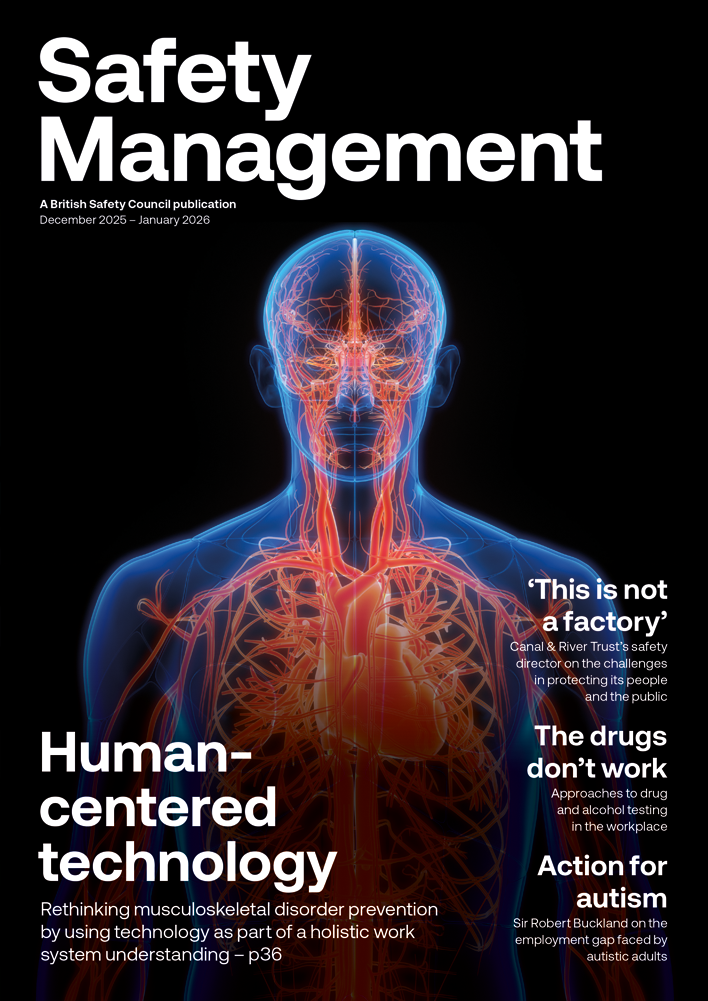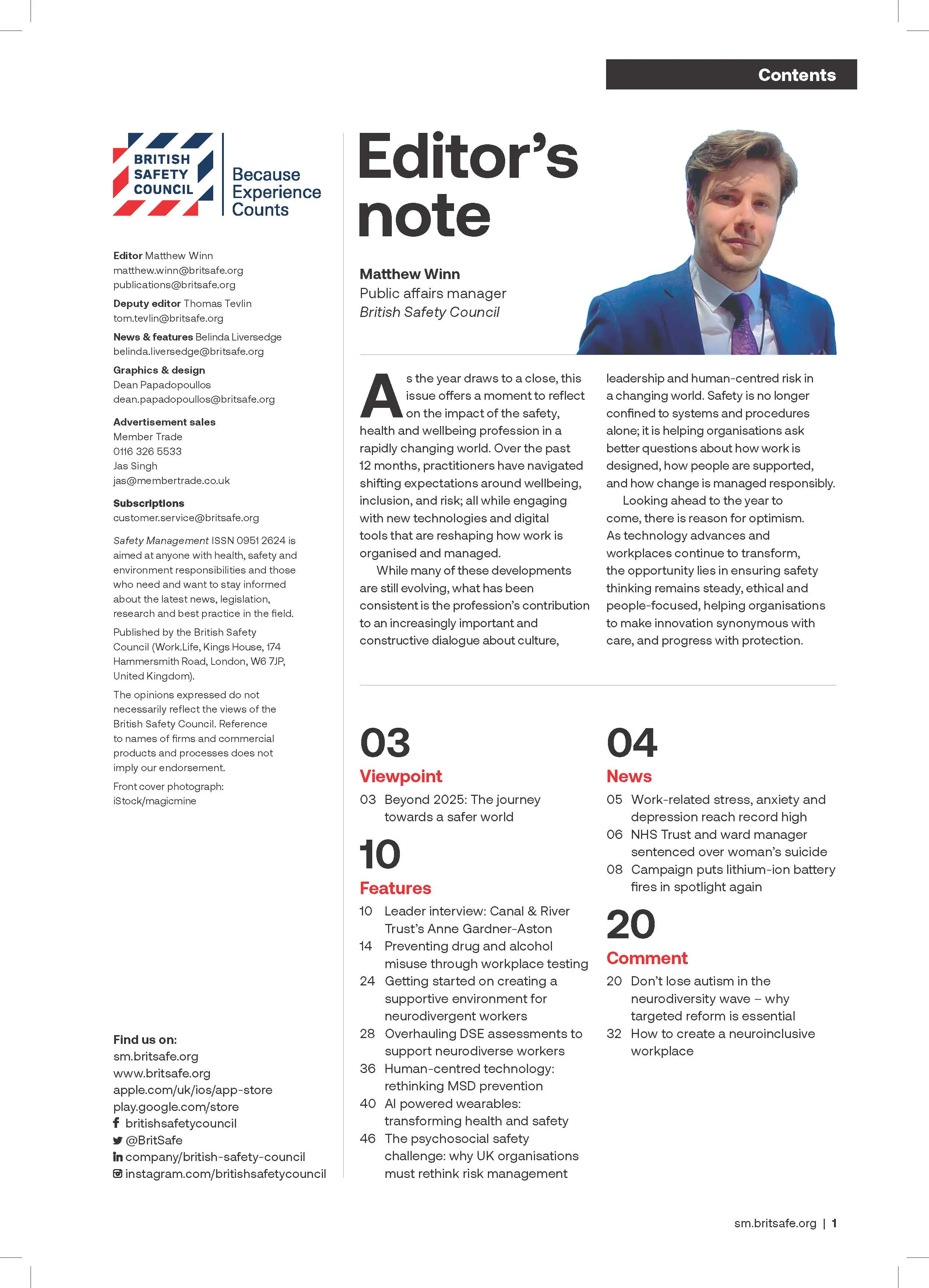Good physical fitness and mobility can help to reduce the risk of workers suffering slips, trips and falls, so it makes sense to encourage staff to improve their coordination, balance and strength, through simple exercises and activities.
Features
How being mobile helps prevent slips, trips and falls at work
For too long, workplace safety discussions have overlooked a critical factor: employee mobility. While environmental fixes remain important, emerging evidence highlights the profound impact an individual’s physical fitness and mobility can have on preventing common and often devastating accidents from happening.
Slips, trips, and falls (STFs) are widely touted as being some of the most common challenges and causes of serious injuries in workplaces across the UK.
The statistics don’t lie; according to the Reporting of Injuries, Diseases and Dangerous Occurrences Regulations (RIDDOR), these incidents account for roughly 30 per cent of all non-fatal workplace injuries. What’s more, these injuries are not confined to any specific sector(s), as workers in manufacturing, construction, retail, logistics – and everywhere in between – can be affected.

Traditionally, approaches to preventing STFs have involved optimising workplace environments as opposed to focusing on the individual. Measures such as improving lighting and visibility, installing non-slip flooring and ensuring sufficient space for adequate movement, among others, are important. However, an emerging body of evidence now suggests that understanding – and improving – an employee’s physical fitness and mobility can be just as important in reducing these preventable accidents.
With many employees spending extended hours in sedentary positions each day, there is also a physiological factor to consider when dealing with STFs. This has led many in the employee wellbeing industry to increase their focus on the importance of balance, coordination and reaction time, as these traits may be compromised when needing to navigate workplace hazards.
A physiological perspective on why falls occur
While this should not be construed as scientific advice, the underlying principle of physical mobility and its connection to STFs undoubtedly has merit. The human body’s ability to maintain stability and movement requires several physiological and cognitive factors at play, not least strength, proprioceptive awareness, cardiovascular fitness, neurological coordination and more.
Muscular strength and endurance form the basis of stability, with the core muscles in the abdomen (including the deep stabilisers of the spine and pelvis) working consistently to help the body maintain postural control. Lower limb muscles like the quadriceps, hamstrings, calves and adductors are all triggered when the body loses balance and tries to regain control and recover. In other words, if these muscle groups are weakened, the body’s innate ability to respond to STFs becomes less effective.
Proprioception (in layperson’s terms, the body’s spatial awareness) is equally vital as this sensory system provides feedback about joint position, muscle tension and movement. Sedentary behaviour can lower our proprioceptive sensitivity; in other words, it makes us less aware of environmental hazards and slows us down our immediate responses when we lose balance.
 Chloe Miller
Chloe Miller
Cardiovascular health and fitness affect our risk of falling in several ways, but in simple terms, poor cardio health can lead to orthostatic hypotension (which is when blood pressure drops significantly upon standing, causing immediate dizziness and increases our risk of falling). Furthermore, cardio fitness is directly proportional to cognitive function and reaction times, which are both integral to hazard recognition and avoidance.
Activities that improve mobility
Moving more can help prevent falls in the workplace by dramatically improving coordination, balance and strength, all of which are integral to preserving stability.
The benefits can be listed extensively, but as a guide, here are some activities employees should consider engaging in – and employers may wish to encourage – to reduce the risks of STFs in the workplace.
- Weight and resistance exercises: compound lifts like squats, deadlifts, bench presses and military presses (among others) improve muscle strength and keep you steady when walking or standing. Set for Set highlights in their guide how compound exercises involve targeting a set of muscles and lifting techniques to improve overall coordination and balance.
- Balance exercises: dancing, yoga, Tai Chi and Pilates can all help you become more aware of your body positioning and react to changes in balance more effectively.
- Aerobic exercises: walking, running, cycling or swimming improve cardiovascular fitness, heart health and circulation to maintain better all-round cognitive consciousness. These exercises can also help you maintain better bone density and reduce the likelihood of them fracturing during a fall.
- Maintaining a healthy weight: physical activity helps to reduce joint stress and lower the risk of falls. The Boxgrove Clinic outlines how weight loss can reduce pain and improve function in people with underlying conditions such as osteoarthritis. This, coupled with regular exercise regimes, can also improve natural reflexes and reaction times, which can be pivotal in preventing serious fall-related injuries.
- Flexibility exercises: hip flexor stretches, thoracic spine mobility and ankle exercises, among others, can restore normal movement patterns and prevent overexertion. Golf Swing Systems’ guide on managing weight distribution during swing exercises carries value in many different applications, teaching you about even foot distribution, pressure on body parts and maintaining adequate balance.
How workplaces can encourage greater workforce mobility
If a company’s workforce is required to be sedentary for extended periods, it’s a good idea for employers to implement measures and actions that encourage staff to be more regularly active. Depending on the extent of their expected physical activities as part of their job role, employers should consider the following initiatives and programmes to encourage staff to be more mobile.
- Install standing desks or desk converters to allow employees to choose between standing and sitting throughout the working day.
- Encourage a series of reminders in employees’ calendars to move around. It’s often said that standing, stretching and moving around for 5–10 minutes every hour can help.
- For those employees who live relatively close to the workplace, consider exploring incentives to encourage them to walk or cycle into the office.
During lunch breaks, a 15–30 minute walk can provide gentle physical activity and mental clarity for them. - Remind employees about helpful desk exercises they can do to improve posture, such as leg lifts, seated marches or desk push-ups, to keep their muscles engaged and circulation in full swing.
- If possible, consider bringing outsourced fitness classes to the workplace or partnering with local gyms to encourage better all-round physical endurance.
 It’s a good idea for employers to implement measures and actions that encourage staff to be more regularly active. Photograph: iStock
It’s a good idea for employers to implement measures and actions that encourage staff to be more regularly active. Photograph: iStock
The business case for improved mobility
While the moral imperative for preventing workplace injuries is clear, the business case for mobility programmes is equally compelling. According to past HSE research , STFs cost UK employers £510 million annually in direct costs (medical expenses, workers’ compensation) and indirect costs (lost productivity, replacement worker training and administrative burden).
Companies that implement stronger, comprehensive approaches to improving employee physical (and mental) health stand a better chance of not just preserving worker safety, but also protecting the organisation’s finances. That said, while the consensus is that UK employers are taking positive steps to support the mental and physical wellbeing of their workforces, WTW research does show that there is a widening gap between the focus of these programmes and what employees feel they need the most.
The key is, therefore, for employers to consider carefully what their employees’ priorities are, rather than assume broadly. While it’s fair to say that nobody wants to suffer a slip, trip or fall, implementing steps to prevent these alone is unlikely to satisfy employee workplace needs, such as improved work-life balance, flexible working patterns and connection to company culture.
As a result, those organisations that can amalgamate and integrate all of these considerations harmoniously will be in the best possible position. Not only can workplace injury risks be reduced and employee health improved across the board, but employers can improve their reputation as an employer of choice, valuing the long-term health and wellbeing of their teams and making mobility programmes a vital component of their remuneration packages. Employees will, over time, begin to take notice and recognise efforts to nurture them and, by extension, their health, which can cultivate a mutually beneficial culture of success.
Key takeaways for safety professionals
The evidence is clear: employee mobility and physical fitness play a crucial role in preventing workplace STFs. Safety professionals should consider the following priorities when developing comprehensive prevention strategies:
- Conduct thorough assessments of current employee fitness levels and workplace-specific fall risk factors
- Implement graduated mobility programmes that address strength, balance, flexibility, and cardiovascular fitness
- Ensure programmes are accessible to employees of all fitness levels and physical abilities
- Integrate movement opportunities into the natural flow of the workday rather than creating additional time burdens
- Measure programme effectiveness through both participation metrics and injury reduction data
- Maintain ongoing education and communication about the connection between mobility and workplace safety
- Consider partnerships with health and fitness professionals to ensure programme quality and effectiveness.
Note. This article explores evidence-based approaches to workplace safety and employee wellbeing. For specific guidance on implementing mobility programmes in your organisation, please consult with qualified health and safety professionals and occupational health specialists.
Chloe Miller is a business graduate and freelance writer, who researches and writes about industry insights and latest best practices. She specialises in marketing, business and HR content. Contact her at:
chloe-miller.co.uk
[email protected]
FEATURES
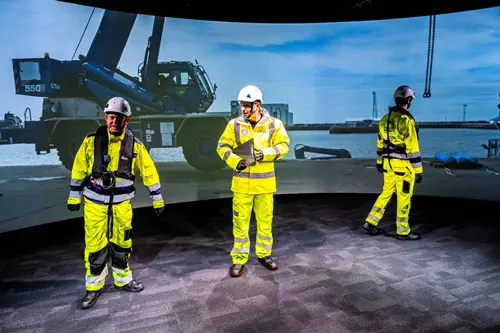
Underpinning safety training with neuroscience for long lasting impact
By SSE Active Training Team (ATT) on 30 November 2025
A behavioural safety training programme developed by Active Training Team for energy provider SSE has been carefully designed with neuroscientific principles in mind – resulting in a prestigious industry award for Best Training Initiative in 2024.
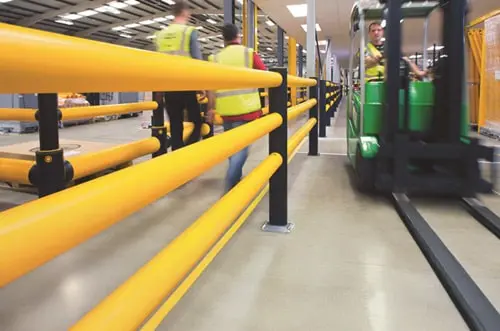
Why a painted line will never be enough
By UK Material Handling Association (UKMHA) on 20 November 2025
Businesses that operate material handling equipment like forklifts are being urged to submit accident and near miss details to a new confidential reporting portal so the industry can identify what needs to be done to improve safety standards.
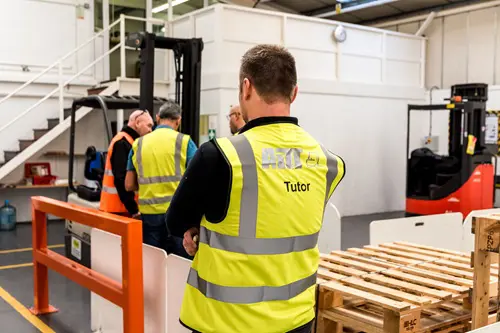
Why workplace transport training is changing in 2026 and what it means for employers
By AITT on 26 November 2025
New workplace transport training categories due in January mean it is essential to ensure operators of material handling equipment have the necessary training for the exact type of machine they use, and accredited training providers are an ideal source of advice and conversion training.


